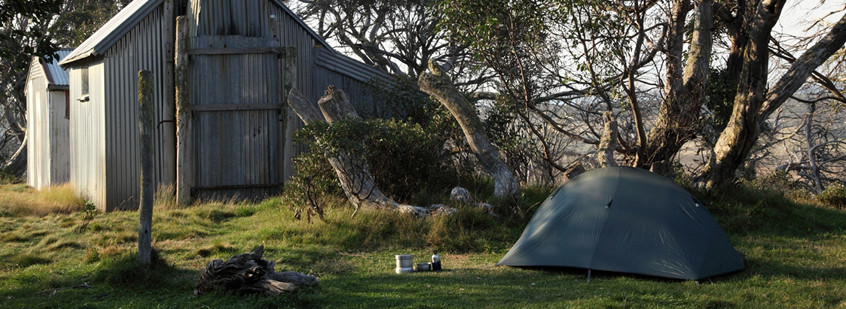Vegetation impacts in the Australian alps have historically been attributed to alpine grazing, the creation of roads, activity around ski resorts and revegetation activities. However, a 2009 study found that recreational activities such as bushwalking, can increase soil and vegetation disturbance, resulting in the invasion of weeds.
Weed control is costly and the spread of pest species should be minimised wherever possible. Weed invasion has been previously observed adjacent to walking tracks and campsites, but has not been examined around huts in the Australian Alps.
Bush huts number over 200 in Victoria and were built from the mid-1800s by cattle grazers, fishermen, miners, foresters and more recently ski and bushwalking groups. These huts are generally located away from main roads and are accessed by walking, horseriding or skiing. They are popular as campsites and can provide emergency shelter in bad weather.
Conducted by researchers from La Trobe University’s Research Centre for Applied Alpine Ecology in the Botany Department, the study examined the vegetation and soil around 25 huts in subalpine areas of the Australian Alps in Victoria. It highlights that recreational activities may provide opportunities for the establishment of weeds in remote high mountain areas, some of which are new to the landscape, and also whether this establishment may lead to further invasion into adjacent native vegetation.

Ox-eye daisies (Leucanthemum vulgare) proliferate near the Dargo High Plains. Photo: John W. Morgan
Published in the journal of Arctic, Antarctic and Alpine Research, the study found that the area around huts had high soil compaction, lower vegetation height, and more bare ground compared to the native vegetation further away. The immediate area (10 metres) around the huts was typically bare ground. This was attributed to repeated trampling. A total of 32 non-native species were recorded within 100 metres of huts. Exotic grasses and daisies were the most common groups recorded. Seven species were found at more than 50 per cent of the huts. These were mainly species that have (a) been long-established ( around 50–100 years) and (b) are the most frequent in the general landscape. Hence, these huts favour plants that grow in disturbed areas by providing opportunities for their establishment, but such conditions are not confined to the hut surroundings.
Several other non-native species were common around huts, but largely absent from the wider landscape. This suggests that some species are advantaged by the disturbance and dispersal opportunities provided by hut recreational activities that would not occur naturally in the Australian Alps.
Vegetation (both native and non-native) was shortest immediately surrounding huts despite most not having been grazed for some time. This is likely due to repeated trampling of vegetation by walkers.
The study notes that an important topic of future research is understanding the ecological impacts of weed invasions on native plant communities. Identifying the factors that cause weed invasion is necessary if conservation managers are to effectively control future invasions around backcountry huts. In those areas already invaded, the ability of the native vegetation to recover, and the factors that limit recovery, should be identified.
So what can bushwalkers and campers do to help prevent weed invasions? Checking for hitchhikers (e.g. seeds) on your equipment – especially shoes and pants – is the first and most obvious step. Cleaning all your equipment after a trip is a good habit. Other considerations would be to take all your rubbish with you. Even something as seemingly harmless as throwing away an apple core can lead to the germination of seeds and a plant which should not be in that environment.
For further details, read the original study ‘Backcountry Huts as Introduction Points for Invasion by Non-native Species into Subalpine Vegetation‘.


